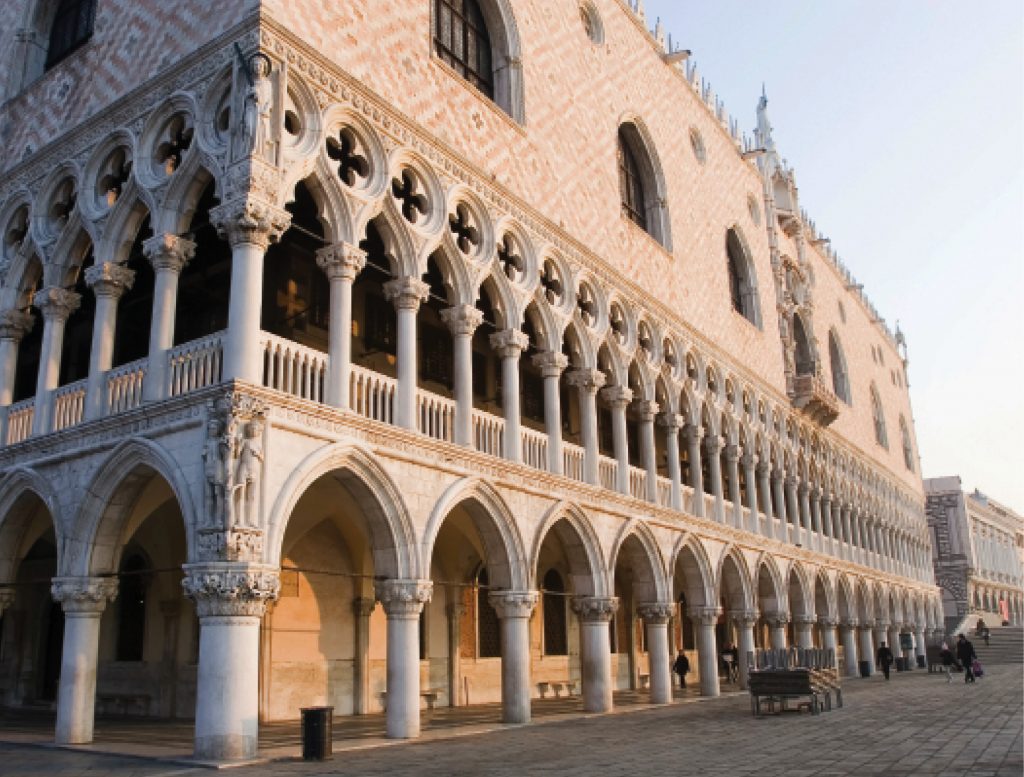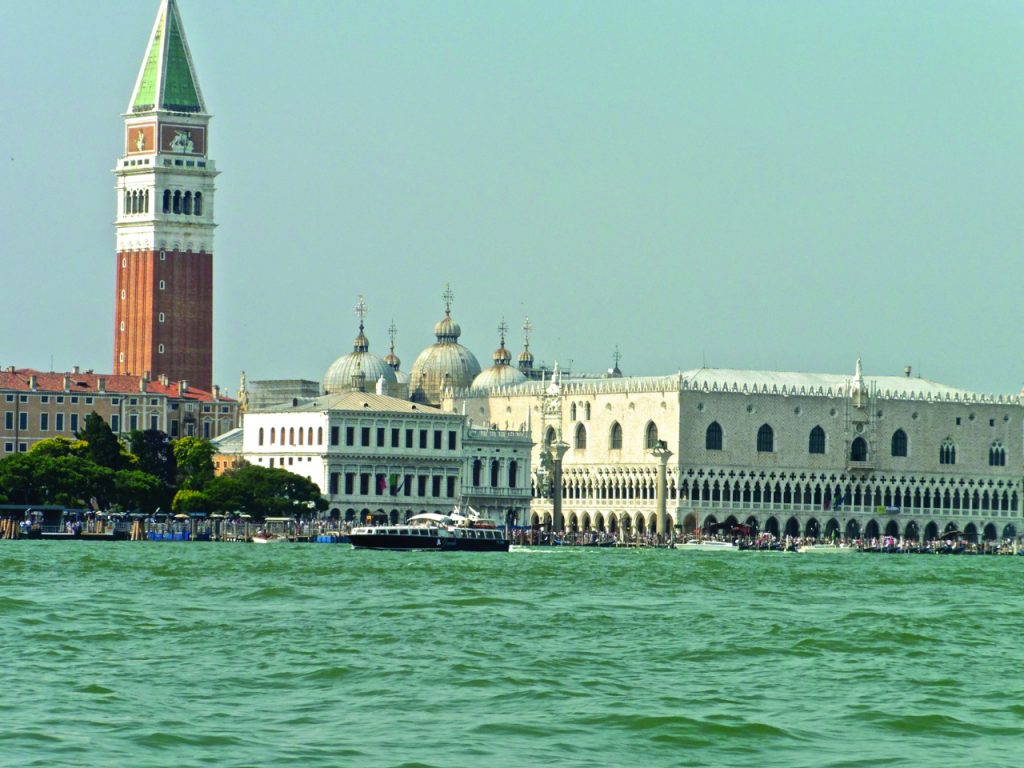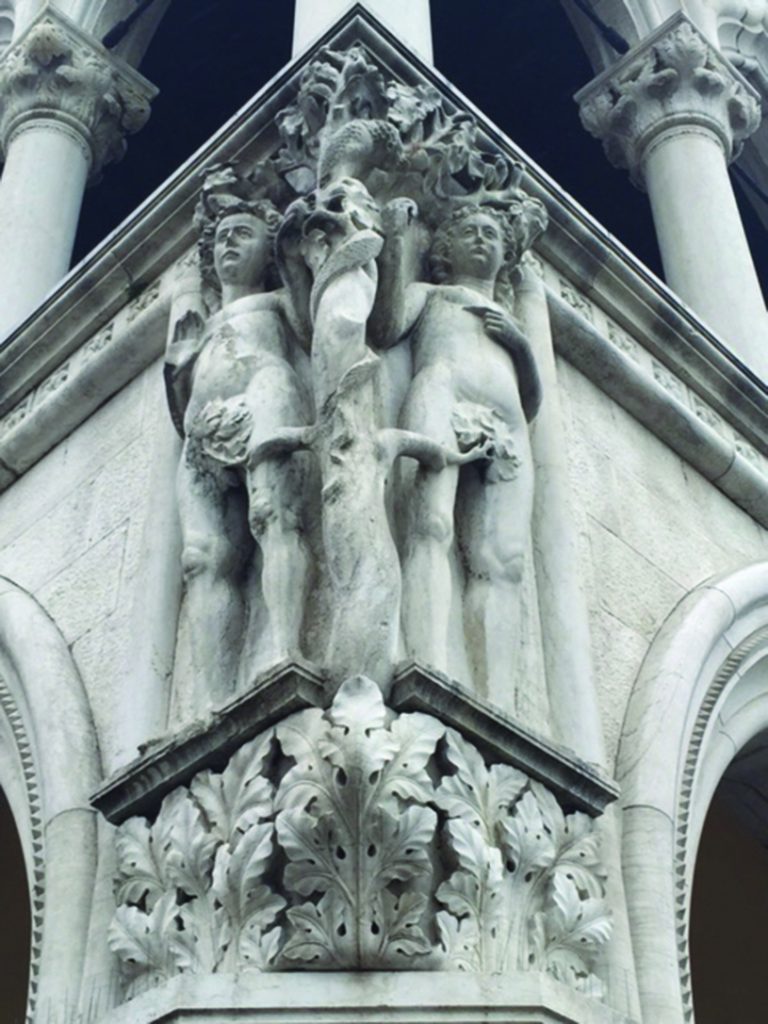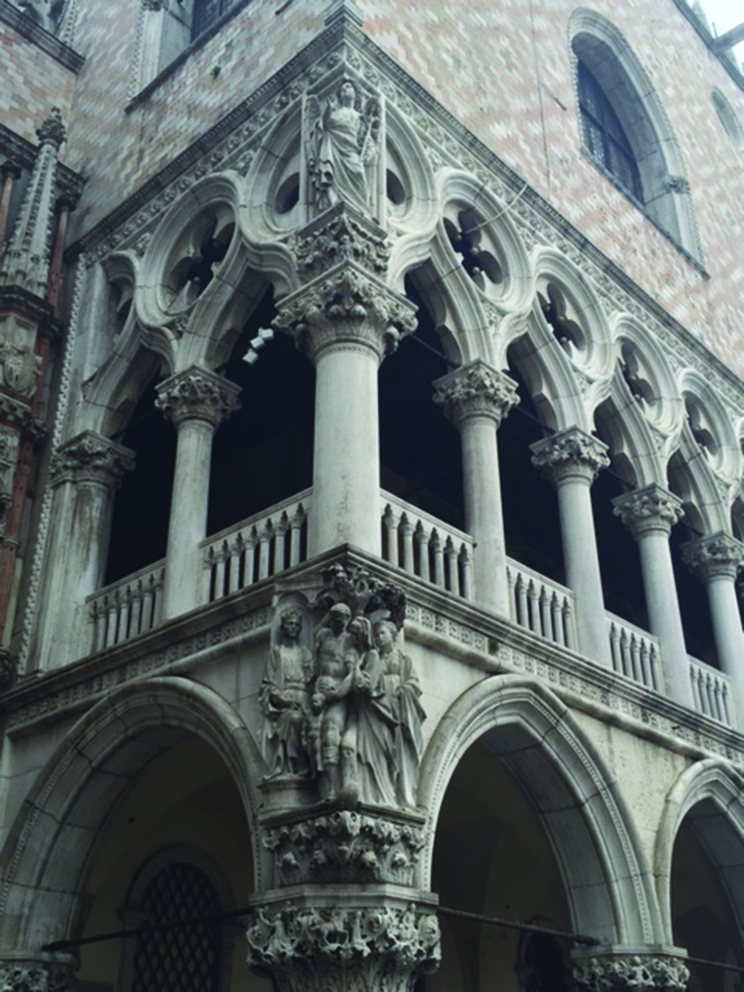The sculptural decoration on the three exposed corners of the Ducale Palace proclaims the fragility of man.
Venice is a wonder which never ceases to amaze me. It often seems, when I look at old favourites, that I am viewing them for first time, so wonderful is the artistic detail and layered meaning. Saint Mark’s Square is the epitome of Venetian state propaganda, with the principal jewels of the Republic being the Ducale Palace and Saint Mark’s Basilica.
Supporting this magnificent stage setting, where all government and religious performance and pageantry unfolded, are the majestic procurator’s offices, the impressive Mint and the glorious clock tower. Ingeniously, the Square is equally a feast for the eyes. When Venice is approached from afar on a boat, as well as when up close at arm’s length, it looks magnificent. The Venetians understood how to create both grandeur and intricacy, with detail at every step.
The Ducale Palace is unlike any other ruler’s palace or seat of government in Italy. Even though it is extremely large and imposing, it manages to seem lightweight and delicate with the novel construction of having the ground floor an open-air portico (instead of a fortress-type stronghold as is the norm elsewhere), and the beautiful white and pink geometric brick pattern over the building’s surface resplendent in the light.
The Palace’s appearance is shouting loud and clear that the Venetians do not need any defensive security here because no enemy would ever be able to storm their wonderland, their paradise city, that they proclaimed to be protected by the divine justice of God and overseen by none other than the Virgin herself. Their naval force, unbeatable, would defend La Serenissima and ensure peace and tranquillity for the Republic.
The sculptural decoration on the three exposed corners of the Ducale Palace, dating to the 1300s and 1400s, is part of one unified statement. It proclaims the fragility of man and his need for the guidance of Venice’s wise government body headed by the Doge, who in turn is guided by divine wisdom.
This decoration further reinforced the myth, one of the many, that was developed over the centuries as part of the city’s identity. Venetia, the female personification of Venice, was often dressed as the personification of Justice, with sword, armour and enthroned. Venice is the very embodiment of justice and the Ducal Palace is the epicentre of the Republic.
St Mark’s Square is a vision of beauty when seen from afar as well as up close
Each corner of the palace has a two-tiered decoration. The lower level (at the top of the ground floor), represents a different scene from the Old Testament, and the upper register, directly above, has an archangel. On the side closest to the prisons there is the representation of the drunkenness of Noah. Noah is shown so drunk that he has lost the ability of self-control and his cup spills as he lets it fall from his hand.
One of his sons, ashamed by his father’s appearance, covers his father’s nakedness with a cloth. Father and sons are separated by a fabulous grapevine that winds upwards and sprouts above them. Above that is the archangel Raphael.
On the side closest to the Mint, Adam and Eve are represented. They are divided by a strong fig tree which has branches sprouting out midway covering the progenitor’s genitalia. The snake, symbol of evil, is curled around the trunk. Above them is the strong archangel Michael dressed in his armour and holding his sword. He protectively guards the gates to Heaven, allowing entry to those whose good deeds outweigh their sins committed.
The side closest to Saint Mark’s Basilica shows the scene of the Judgement of Solomon. Two women have claimed to be the real mother to a child and they were brought before Solomon. He was known for his great wisdom, they thought that he could decide what to do. He ruled that the baby be cut in half and divided equally between the women. He knew that the real mother would be revealed this way because she would prefer to see her child survive and live with another than let it die.
On the Palace we see the mother grabbing the soldier/executioner, who has his sword in one hand and the baby in the other. Solomon is on the left, enthroned. Above is the archangel Gabriel shown with his attribute, the lily.
The above-mentioned first two corners remind us that man will be led astray without the guidance and help from Above, represented by the angels. The third corner of Solomon reminds the elected government of their role in serving the Republic. As a whole it is intended to convey that in Venice the government is not only just to the citizens but is exemplary to all other lands, because like Solomon, the people are protected and guarded and directly in touch with the Divine.




